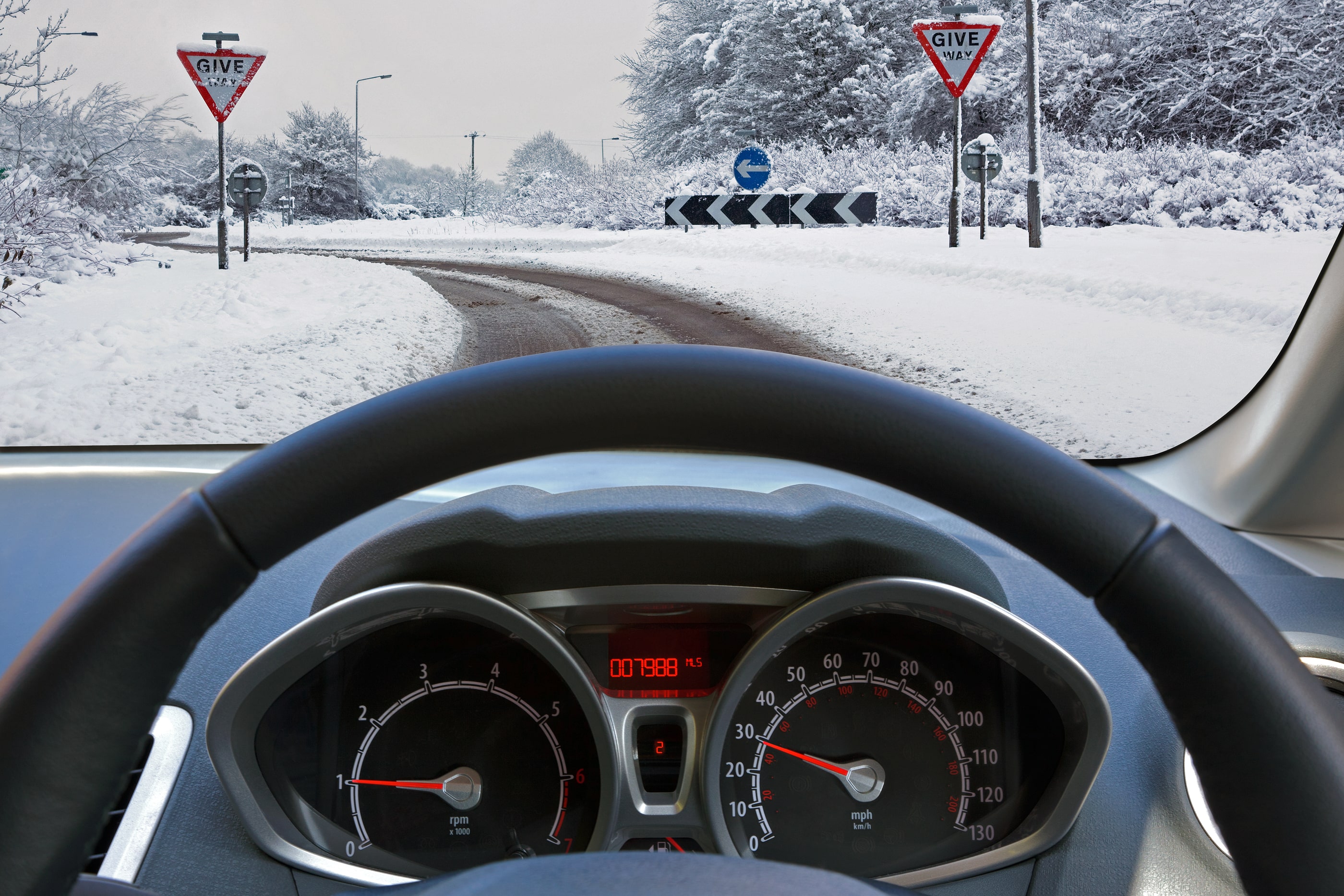Our internal driving data shows that car accidents increase by 14% in October and November1, and further, January has the highest number of accidents throughout the entire year2.
Winter is definitely the most difficult time of the year to drive. Sub-zero temperatures result in dangerous road conditions – and it already seems like it’ll be a cold winter!
Reduced sunlight with ice, snow or hail makes a dangerous combination. Here’s how we advise you to prepare for the season.
Preparing for winter driving conditions
- Do you really have to make this journey? If you know it’s dangerous on the roads, make alternative arrangements to get to your destination.
- Make sure you’ve been maintaining your car, and check your tyre treads.
- Keep an emergency kit in your car including a torch, hi-vis vest, ice-scraper, de-icer and a warm blanket or a coat.
- Charge your phone before any journey.
- Let someone know about your route and estimated arrival time.
Driving in icy conditions
- Keeping it cool and staying alert are vital when you’re driving on icy roads. Any manoeuvre will have a bigger impact on ice so be delicate.
- Drive slower than you normally would.
- Keep a bigger distance to the car in front of you – braking distances increase tenfold on ice! Don’t forget about black ice: you might not see how slippery the road is.
- Start braking sooner than you normally would; that tenfold stopping distance is really tenfold. Follow the 2-second rule: once the car in front of you has passed a specific spot, a lamp post or traffic sign for example, it should take two seconds until you reach that spot.
- Be careful when accelerating, braking and steering to reduce skidding.
- If you skid, avoid braking and steer smoothly. Don’t let go of the steering wheel!
Driving in snow
- Accelerate gently and try to keep a higher gear for better grip on the road.
- Check if your car has winter mode which can help you reduce the slip.
- Keep a good distance to the car in front of you, snow becomes slippery on the road surface.
- Keep a steady speed with enough space to prepare for uphills and downhills so that you can avoid braking (unless necessary).
- If you’re driving in snowfall, use your dipped headlights, or fog lights if visibility is really poor.
- Use sunglasses to reduce the glare of low winter sun reflecting on the snow.
Driving in hail
- Hail storms can be extremely dangerous and even damage your car if severe. Stop driving and pull over somewhere safe.
- Don’t leave your car if it’s hailing heavily.
- When possible, drive facing the hail so that it hits the front of the car. Windscreens have more strength to uptake this than the other windows.
- Avoid driving in low surfaces or ditches in case the hail melts quickly and causes water to rise.
Accidents and breakdowns are more common in the winter. No matter how great your car is, extreme winter weather can get anyone in trouble. What you can do, is stay alert and prepare your car for winter!
1Analysis based on ITBL customer claims and driving data from 2015-2018.
2Claims data for policyholders for all ITBL brands since 2013.
